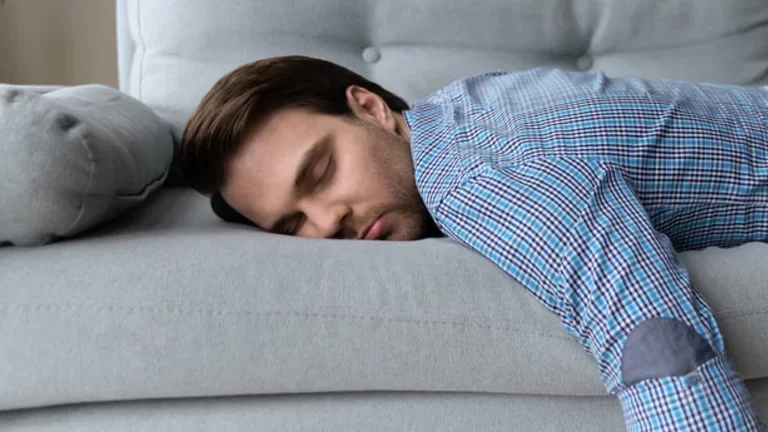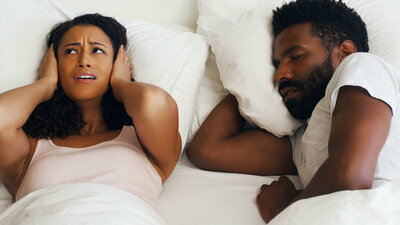Who doesn’t love a good nap? But… Is it worth it?
Published on September 21, 2022
5 minutes

A good nap can make you feel like you are ready to take on the world! A midday snooze can help you feel energized, refreshed and focused. So, why are some people saying naps aren't always a good thing?
Napping, contrary to popular belief, isn't beneficial for everyone! The underlying reason to nap can either benefit or hinder your long term health. If you have a sleep disorder, like sleep apnea, naps can make your symptoms worse. Let’s explore who can benefit from napping and who should avoid them.
Does napping help us feel refreshed?
Research shows that naps can help healthy adults improve brain functions like memory, creativity and focus. You can consider making the time for a nap if you are experiencing fatigue or unexpected sleepiness, potential sleep loss due to a long work shift, or incorporating naps into your daily sleep routine.
Napping offers benefits for healthy adults, without sleep disorders:
- Relaxation
- Increased focus
- Reduced fatigue
- Mood improvement
- Improved performance, including improved response time and memory.
Best ways to take a nap, for healthy adults:
- Keep nap length 20 to 30 minutes. The longer you sleep, the more likely you are to wake up drowsy. You may be able to handle longer naps if you are younger.
- Early afternoon naps before 3 p.m. are recommended. Napping might disrupt your ability to sleep at night. Individual factors such as the amount of sleep you require, your sleep routine, age, and the medications you take can all influence the best time to nap.
- Create a relaxing atmosphere. Nap in a dark, quiet space with a pleasant temperature and minimal disturbances.
Allow yourself time to wake up after a nap before returning to tasks that need a rapid or sharp response.
Do you wake up feeling groggy after a nap?
Napping isn’t for everybody. If you’re not a habitual napper, chances are you might fall into a deep slumber when trying to take a nap. This is why some people may feel more tired after taking a nap.
Dr Sara Mednick, a psychologist at University of California says, “it’s important to ask yourself why you’re taking the nap. If you’re feeling sleepy during the day, your desire to nap could be driven by sleep disorders like sleep apnea, insomnia, stress, or other sleep disrupting conditions”.
Consider speaking to a physician if you find yourself taking a nap every day, just to get through the day. Regularly falling asleep at work, or feeling drowsy while driving can be a sign of serious health concern. It can put you, your loved ones and your community at risk.
Daytime fatigue, difficulty concentrating and poor mental health can be signs of sleep apnea. If you are at risk for diabetes, high blood pressure, or obesity—it can increase your chances of having sleep apnea.
If you have sleep apnea, use your CPAP during naps.
Prolonged and regular daytime napping can affect your sleep routine, which makes falling asleep at night challenging.
As a sleep apnea patient, you must sleep with your CPAP (Continuous Positive Airway Pressure) mask at all times, even for short naps. Without your CPAP machine, even if you are resting for a few moments, you may suffer from disruptive apneas.
If you need to take a nap. Keep these tips in mind before you rest your head:
→ Try to take a nap earlier in the day (before 3 p.m.)
→ Always use your CPAP device
→ Limit your nap to 20 or 30 minutes.
Shorter naps prevent deep sleep and avoid sleep inertia (groggy and disoriented feeling after waking up).
Could napping be a sign of sleep apnea?
If you find yourself napping everyday, feeling tired and have been told you snore, but haven’t been diagnosed with sleep apnea—consider taking our sleep quiz. It is a short 8-question test to determine if you are at risk for sleep apnea. If you are at risk for sleep apnea, it is important to consult your doctor to start treatment. There are several long term health risks of delaying treatment.
CPAP therapy is the most effective treatment for obstructive sleep apnea, the most common type of sleep apnea. CPAP machines treat mild to severe obstructive sleep apnea. They have a generator that pumps the required flow of air through a mask you wear while sleeping, to create a light pressure in your throat that keeps your airway open.
VitalAire will help you throughout your sleep health journey, with a personalized one-on-one approach to improve your sleep, health and well-being.
If you want more information about sleep apnea, our VitalAire clinicians would be happy to speak with you, please contact us.
Reference:
Capritto, A. (2022, March 14). National Napping Day: How to take a nap and wake up refreshed, not tired. CNET. Retrieved March 14, 2022, from https://www.cnet.com/health/sleep/how-to-take-a-nap-and-wake-up-refreshed-not-tired/
Heid, M. (2014, October 1). You asked: Is it good or bad to take a nap? Time. Retrieved March 14, 2022, from https://time.com/3449959/is-napping-healthy/
Mayo Foundation for Medical Education and Research. (2020, November 13). How to get a great nap. Mayo Clinic. Retrieved March 14, 2022, from https://www.mayoclinic.org/healthy-lifestyle/adult-health/in-depth/napping/art-20048319



